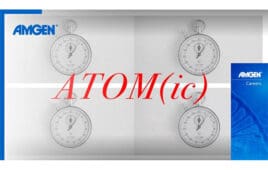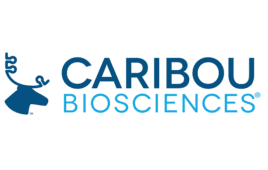
[Image courtesy of Adobe Stock]
Oksanen quickly assumed supervisory and leadership roles in the formulation development department. Over time, she led the development of more than 20 drugs from scratch through to regulatory approval and launch. “I learned a lot about how to develop a drug product,” she said. “So, my responsibilities grew.”
Rising through the ranks, she ultimately served as senior director, drug product design from late 2012 to mid-2022.
Paying it forward: Ongoing mentorship at AAPS

Cynthia Oksanen
At Pfizer, Oksanen prioritized developing talent and fostering creativity. As a leader, she gravitated towards roles supervising scientists and managing cross-functional teams. Now retired after more than 30 years at Pfizer, Oksanen views mentoring as one of the most rewarding parts of her legacy. Since 2007, she has been actively involved with the American Association of Pharmaceutical Scientists (AAPS), helping plan workshops, serving on committees, and leading the Manufacturing Sciences and Engineering section. Oksanen is also a current board member at AAPS.
Fittingly, mentorship is also a core focus of her work with AAPS. Oksanen supported emerging scientists with formal and informal mentorship, offering career advice and encouraging them to undertake new projects. “What’s rewarding is when, like last year at the AAPS PharmSci 360 meeting, someone came up to me and said that the advice I gave was the best they ever received,” she recalled. “It didn’t seem earth-shattering to me at the time.”
While seemingly unremarkable in her mind at the time, hearing of its enduring impact provided validation. “It showed me that it’s worth my time to talk to someone and give advice,” she said.
Pioneering material and cost savings
During Oksanen’s time at Pfizer, there were notable improvements in drug formulation. “There was one period where we had seven filings in a two-year period,” Oksanen said.
“Probably the biggest change is the amount of drug we would use to develop a product,” she recalled. When she started, the best practice was to screen multiple formulations. The process was “kind of a trial and error approach,” Oksanen said. “This meant going through a lot of the precious drug API, which cost a lot to make and they don’t even know how to make it yet.”
Oksanen’s team focused intently on material-sparing techniques. Their diligence soon paid off. Within a few years, Oksanen witnessed drastic reductions in drug material requirements. “By the time I left, we had reduced our usage from three kilos of drug per new product to tens of grams to develop a formulation,” she said. Her team achieved this 1,000-fold decrease by investing in proprietary small-scale experimentation tools and standardizing select formulation approaches based on material properties. Rather than rely on trial-and-error, they could now predict optimal formulations that scaled to manufacturing.
A leap in efficiency in drug formulation
Oksanen’s group led targeted innovations transforming Pfizer’s formulation workflow. “We set up a material science lab to measure material properties, and based on those properties and the required dose, we used default formulations that we knew could scale up to manufacturing,” she explained. “We eliminated the need to screen countless formulations.” Through optimization, her team reached a point where the initial formulation blueprint barely needed tweaking to yield the final approved marketed product. “Eventually, for some drugs, we achieved a formulation at the start that made it to market with only minor lubricant or excipient adjustments,” Oksanen recalled.
The improvements in process and cost efficiency at Pfizer had a global reach. “We would develop the dosage forms and then transfer the manufacturing technology to sites around the world,” she described. Her 70-person formulation team brought more than 20 drugs from scratch through to regulatory approval. Their methods then enabled efficient large-scale manufacturing worldwide.
In addition, Oksanen led changes across Pfizer by leading various global teams. “I was assigned or volunteered for different groups developing new capabilities or best practices,” she recalled. Her team transformed early clinical formulation approaches using extemporaneous compounding and overhauled approaches for demonstrating bioequivalence in regulatory submissions.
Legacy of mentorship
While driving major advances in efficient drug formulation, Oksanen knew her responsibilities extended beyond the lab bench. “Part of my day-to-day journey was developing my people,” she described. “As a supervisor, I started off supervising individual lab scientists and then moved on to supervising managers, trying to develop the next generation of leaders.” Mentoring emerging talent and ensuring inclusive idea sharing became pillars of her approach. “Another best practice is making sure everyone’s heard in the team,” Oksanen explained. “We often used sticky notes in the room. For example, in brainstorming sessions, instead of having everyone shout out their ideas, everybody writes something down, and then we gather the notes and discuss them. This is a way to ensure everyone is heard without one person dominating the conversation.”
Building a legacy
And through AAPS, Oksanen aims to create a springboard for future scientific leaders in pharma. “I hope more people take advantage of it,” she says of the organization’s mentorship initiatives. The program presents a chance not only to pay forward the support she received over the years, but also to systematically pave the way for more women to advance into leadership roles where she often stood alone.
“What I’d really love to see is for some of the younger scientists I’m mentoring now to step up in five or ten years and become mentors themselves,” Oksanen said.
Filed Under: Drug Discovery and Development, Women in Pharma and Biotech



